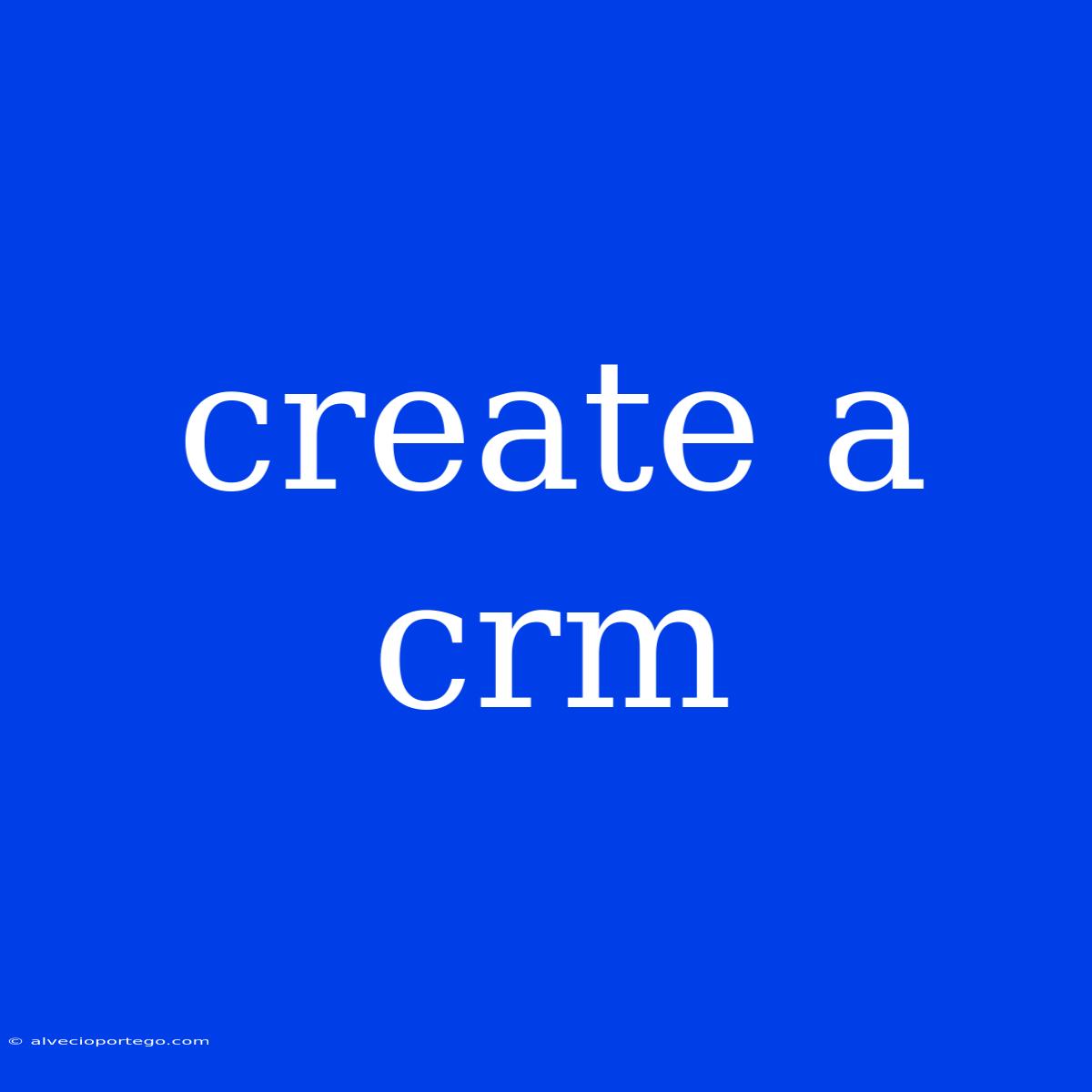Building a CRM: A Comprehensive Guide for Beginners
A Customer Relationship Management (CRM) system is a crucial tool for businesses of all sizes. It helps you organize customer data, track interactions, and manage your relationships to ultimately drive sales and improve customer satisfaction. While ready-made CRM solutions are readily available, building your own CRM can offer a unique advantage: tailored functionality to perfectly match your specific business needs.
This article will walk you through the process of building your own CRM, covering everything from defining requirements to deployment and ongoing maintenance.
1. Define Your Requirements: What do you need from a CRM?
Before diving into development, take the time to understand your specific requirements.
- What data do you need to collect? This could include customer demographics, purchase history, support interactions, website activity, and more.
- What functionalities do you need? Think about things like contact management, lead tracking, sales pipeline management, marketing automation, reporting, and customer support features.
- Who will be using the CRM? Consider different user roles and their specific needs.
- What are your budget constraints? This will affect your choices for technology, development, and ongoing maintenance.
2. Choose a Development Approach: Building vs. Using a Framework
There are two primary approaches:
a) Building from Scratch:
- Pros: Maximum customization and control.
- Cons: Requires strong programming skills and significant time investment.
- Best for: Businesses with specific, complex needs and a dedicated development team.
b) Using a CRM Framework:
- Pros: Faster development, pre-built functionality, cost-effective.
- Cons: Less customization, potentially restricted features, may require technical expertise.
- Best for: Businesses with moderate customization needs and a desire for a quicker solution.
Popular CRM frameworks include:
- Django (Python): Powerful and feature-rich.
- Ruby on Rails: Known for its rapid development and convention over configuration.
- Laravel (PHP): Flexible and widely used in web development.
- Node.js: JavaScript-based, ideal for real-time applications.
3. Design the User Interface and User Experience (UI/UX):
A well-designed UI/UX is crucial for usability and user adoption. Consider:
- Simplicity and intuitiveness: Make the system easy to navigate and understand.
- User roles and permissions: Provide appropriate access levels for different users.
- Data visualization: Use charts, graphs, and dashboards to present key metrics effectively.
- Mobile responsiveness: Ensure the CRM works seamlessly on different devices.
4. Develop the CRM Features:
This is the core of the development process. You'll need to build features like:
- Contact Management: Create, manage, and update customer profiles.
- Lead Tracking: Capture and qualify leads, track their progress through the sales pipeline.
- Sales Pipeline Management: Organize deals, manage follow-ups, and track progress towards closure.
- Marketing Automation: Schedule emails, create campaigns, and analyze results.
- Reporting and Analytics: Generate insights from your customer data to improve decision-making.
- Customer Support: Manage tickets, track resolution times, and provide self-service options.
5. Test and Iterate:
Thorough testing is crucial to ensure the CRM functions correctly and meets your requirements.
- Functional testing: Verify that all features work as intended.
- Performance testing: Assess the system's speed and responsiveness under load.
- Security testing: Identify and fix any vulnerabilities.
- Usability testing: Get feedback from users and iterate based on their input.
6. Deploy and Maintain:
Once you're confident in the CRM's functionality, you need to deploy it. This may involve:
- Choosing a hosting platform: Cloud-based or on-premise solutions.
- Data migration: Importing existing customer data into the new CRM.
- User training: Educate users on how to use the system effectively.
Ongoing maintenance is crucial to keep your CRM secure, updated, and functioning smoothly. This includes:
- Regular security updates: Patching vulnerabilities and protecting your data.
- Performance optimization: Ensuring the CRM continues to run efficiently.
- Feature enhancements: Adding new features or improving existing ones.
- User support: Providing assistance to users when needed.
7. Continuously Improve:
A CRM is a living system. As your business grows and evolves, your needs will change. Regularly review your CRM and make adjustments to ensure it continues to meet your requirements.
Building your own CRM can be a challenging but rewarding journey. By following these steps, you can create a system that perfectly aligns with your business goals and helps you foster lasting relationships with your customers.

